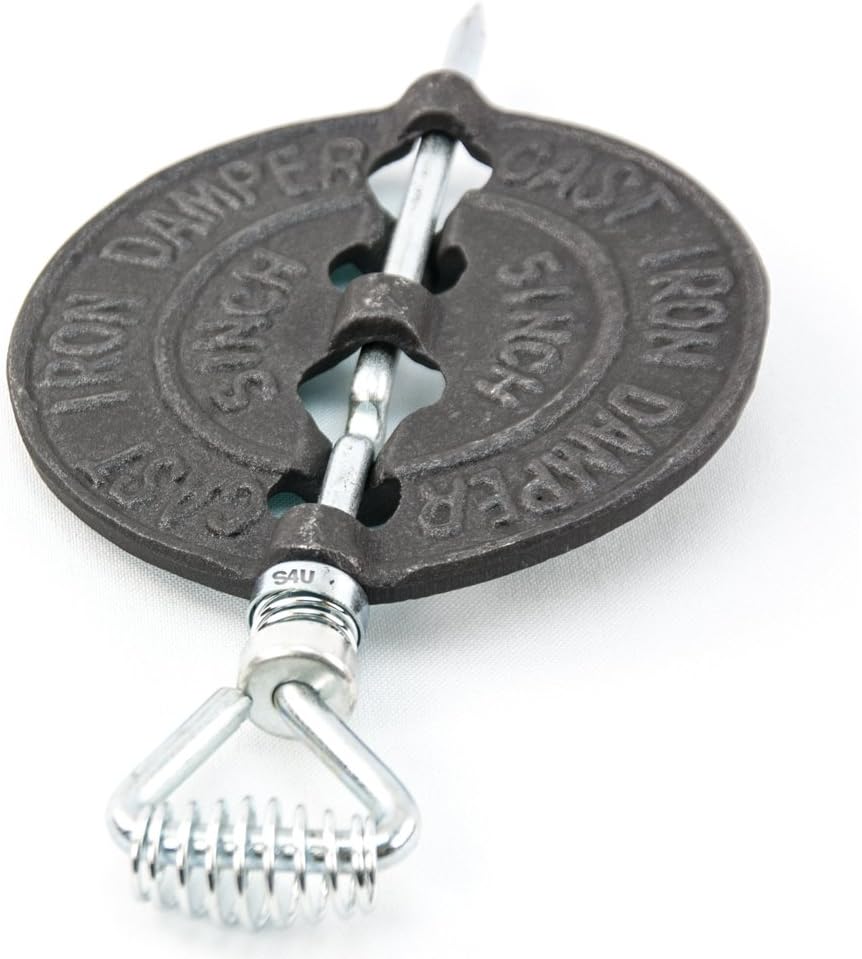
Cast Iron Flue Pipe Damper For Wood Burning Stoves Wood Burners Fires S4U® (5" Flue Damper)
FREE Shipping
Cast Iron Flue Pipe Damper For Wood Burning Stoves Wood Burners Fires S4U® (5" Flue Damper)
- Brand: Unbranded

Description
Do you have a problem with your damper or flue? A-1 Chimney Specialist of Winchester, TN, and Huntsville, AL, is ready to help. We provide licensed fireplace and chimney inspections, chimney sweeping and all types of chimney repairs to keep your home and family safe.
Annual chimney sweeping is recommended for flues connected with wood-burning fireplaces. A CSIA-certified chimney sweep uses specialized tools to remove creosote and obstructions, thereby keeping your chimney safe and efficient. The fact is, these two parts of your system are quite different in terms of function and necessary maintenance and upkeep. Let’s look at the specs of flues and dampers. The chimney flue If a flue is used with a fireplace, it releases these through a chimney opening. If used with a furnace or wood stove, it releases them through a vent on the roof or side of the building. Image source: Camosse Masonry Supply Based on installing a new A-rated condensing boiler in England, Scotland and Wales with a programmer, room thermostat and thermostatic radiator controls (TRVs) in a gas heated detached home from an older G-rated boiler with a programmer and room thermostat. Figures are based on fuel prices as of October2023. Savings will vary depending on the size and thermal performance of your home. Source: Energy Saving Trust. A throat damper is positioned at the bottom of the flue and about a foot above the firebox in an open fireplace, just out of sight from the outside of the fireplace. A top-mount damper will be at the top of the flue underneath the chimney cap. Do You Need a Fireplace Damper?
Your damper is a plated device that sits above the firebox. Its function is to regulate the volume of air that travels through the fireplace/chimney system. When fully open, the damper allows for sufficient air to start fires easily and keep them burning aggressively. It also gives smoke and toxins such as dangerous carbon monoxide a pathway to exit the fireplace. The flue itself is any metal tube through which ash, sparks, smoke, and gases are drawn up and away from the interior of your house. Looking to become more self-sufficient? Join me and 14,000 others on Abundance Plusand get discounts, masterclasses, community, and more. What’s the Difference Between a Flue and a Damper? A chimney/fireplace system has a lot of parts, components and areas – and plenty of terminology to describe each. The chimney flue and fireplace damper sometimes are thought to be basically the same thing, since both have to do with drafting and venting a fireplace.
The flue is very important to the proper functioning of a fireplace, furnace, or stove. Fire needs oxygen to burn, and the flue creates negative pressure that pulls air up and through the combustion point. This updraft keeps the burn steady and hot, with more active flames and less smoke generated. It helps to properly maintain the fireplace, to control the updraft, and to be able to seal it off when you aren’t using it. On a furnace or wood stove, the damper will be at the base of the flue but not visible from the outside. In an open fireplace, it comes in two styles: throat damper and top-mount damper. The flue is also sometimes called the chimney lining when used with an open fireplace. You may think that it is your chimney that pulls the smoke up and out of your house when you’re burning fire, but this is incorrect. A damaged fireplace damper may not fully open or close. Rust can cause this. So can warping and general old age. After an inspection, your chimney technician will tell you the extent of any damage present and will advise either repair or replacement of the damper.As noted, chimney liner inspections are important as are inspections of your masonry structure and components such as the chimney crown, chimney cap and chimney flashing. The fireplace damper Flue liners are typically built from stainless steel, clay tiles or a cast-in-place material. Each style of liner is durable and long-lasting – but no liner will last forever. Chimney liners should be inspected regularly to spot early signs of damage or malfunction. Closing the damper when a fire is not burning seals off the fireplace from the outside. This keeps the conditioned (heated or cooled) air inside your home from escaping and also prevents precipitation, wind gusts, and intrepid animals from making their way down the flue tube into your home.
- Fruugo ID: 258392218-563234582
- EAN: 764486781913
-
Sold by: Fruugo
